Best brake pads for road and gravel bikes 2025: our guide to the best replacements and upgrades
With these disc brake pad upgrades, you can get faster by going slower, brake later, and have more control to increase speed across your ride.


Matt Ischt-Barnard
Riding fast is no longer just about who gets to the top of the climb first. Riders like Tom Pidcock and Matej Mohoric have taken big wins on the world stage in recent years thanks to their abilities to descend. So, it might sound counterintuitive, but braking efficiently and slowing down with the best brake pad for road and gravel could make you faster.
Of course, the whole braking system is vitally important; the quality of the bleed, the rotors, and the overall condition make a big difference. Let me not understate how much good descending techniques can have the most significant impact. However, a relatively inexpensive and highly effective way to increase speed is to upgrade the disc brake pads of your best road bike and gravel bike. Espcially for those riding bikes at the more cost-effective end of the spectrum, like the best budget gravel bikes.
Different compounds and types of brake pads can offer different attributes. Think about what feedback your brakes give you on a descent. Are they 'fading' or losing power as they heat up?
Ultimately, for most people, good all-around and all-weather performance is the preferred option. Pads like our best overall, the SwissStop RS pads, pretty much hit the nail on the head in that regard. However, in this guide, we feature eight different top-rated brake pads, all offering slightly different performance depending on your needs.
The Quick List

Swiss-engineered brake pads that are quiet, powerful and offer excellant modulation levels.
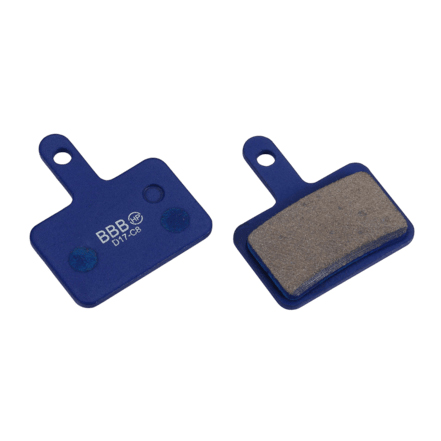
The initial bite is very good, and the modulation is on par with SRAM and Shimano OE options. The pre-sanded finish provides excellent performance and a minimal bedding-in period.
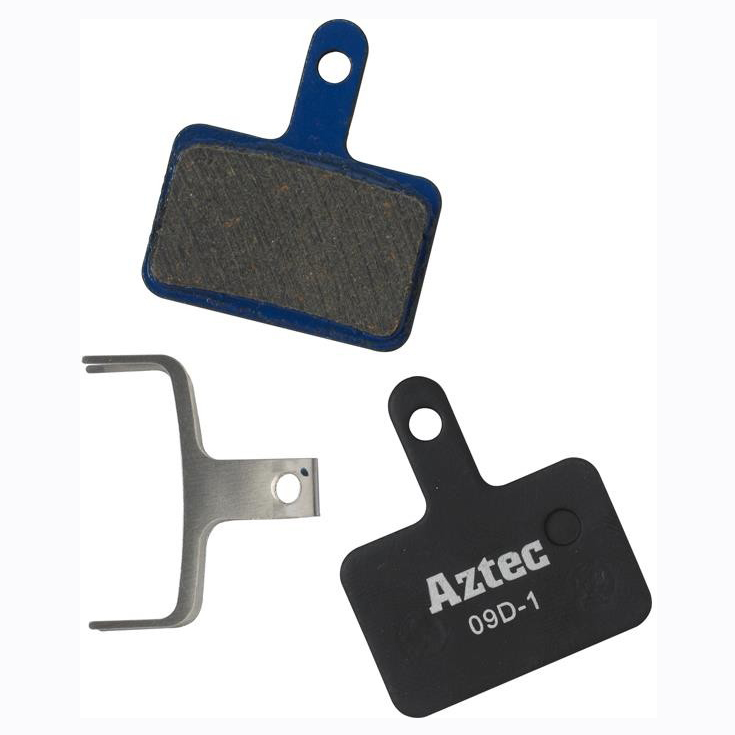
Backed with a material that takes heat management in its stride, the Aztec pads are also surprisingly quiet. Their value, considering they can be picked up for just a few pounds, is fantastic.
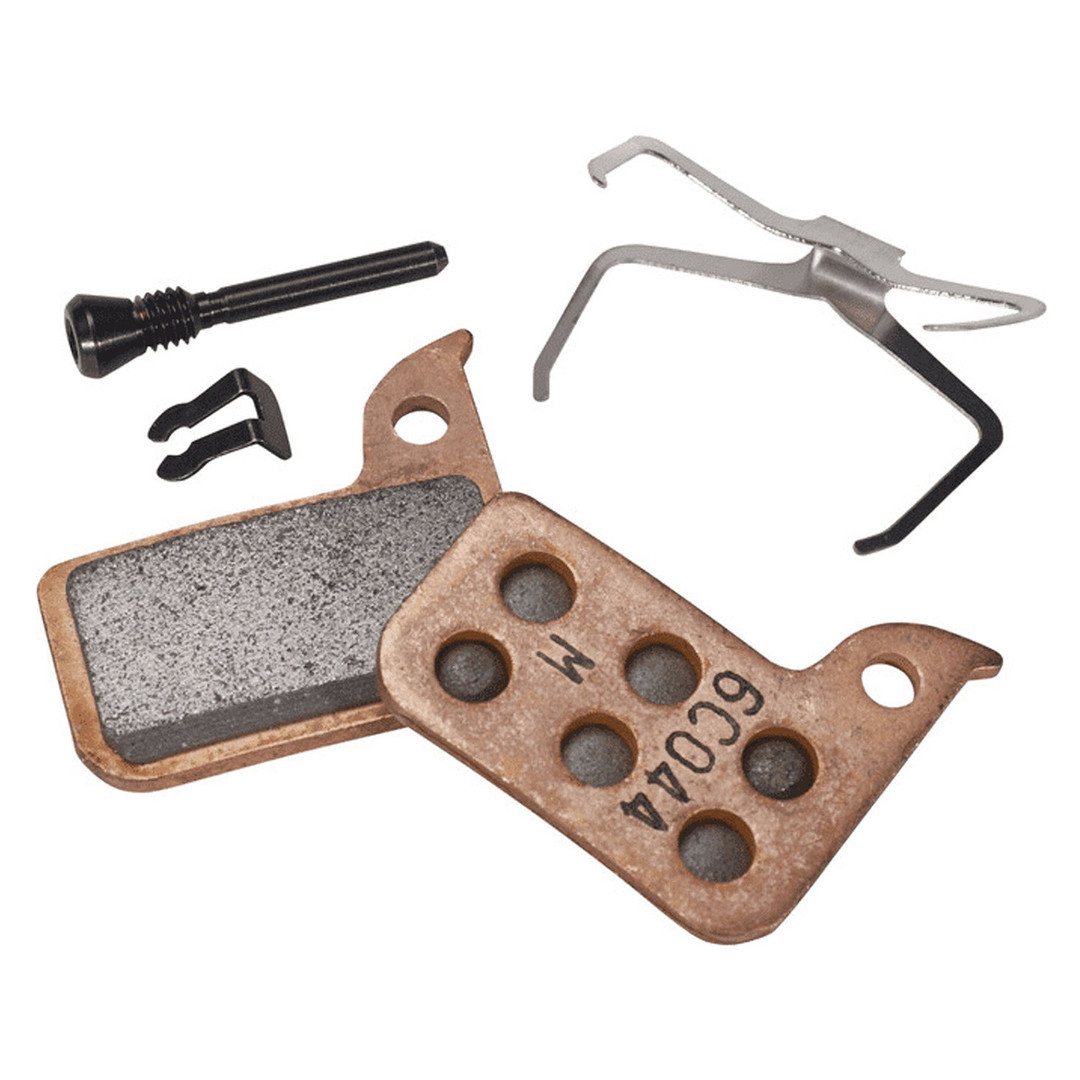
While only available from SRAM systems, their in-house heavy-duty sintered brake pads offer a significant performance upgrade on the standard organic OEM pads.
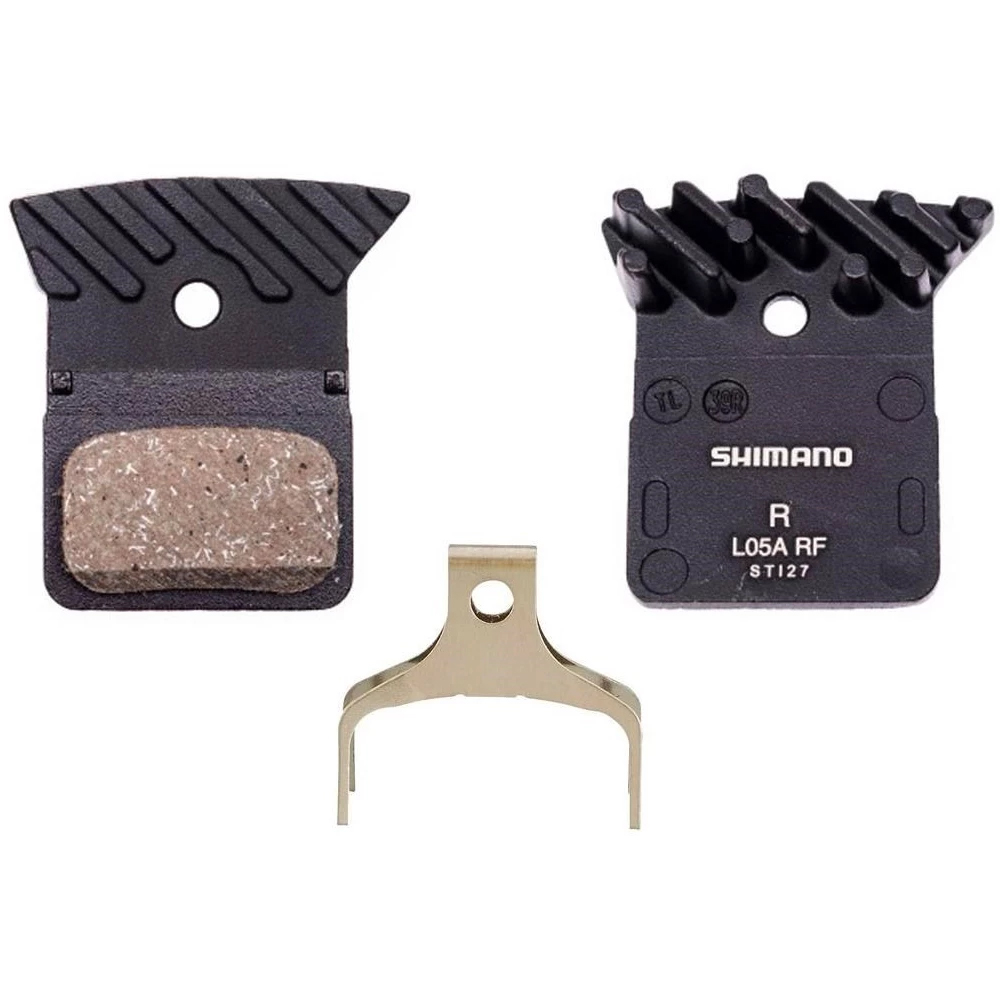
Made with a very soft pad material, the LO5As offer riders excellent initial bite and modulation out of the box. However, this soft material is prone to contamination and glazing.

While it’s true that the Disc E has marginally less bite, on the plus side it has improved modulation, better tolerance to heat and more robust wear characteristics.
load two more of our top-rated brake pads
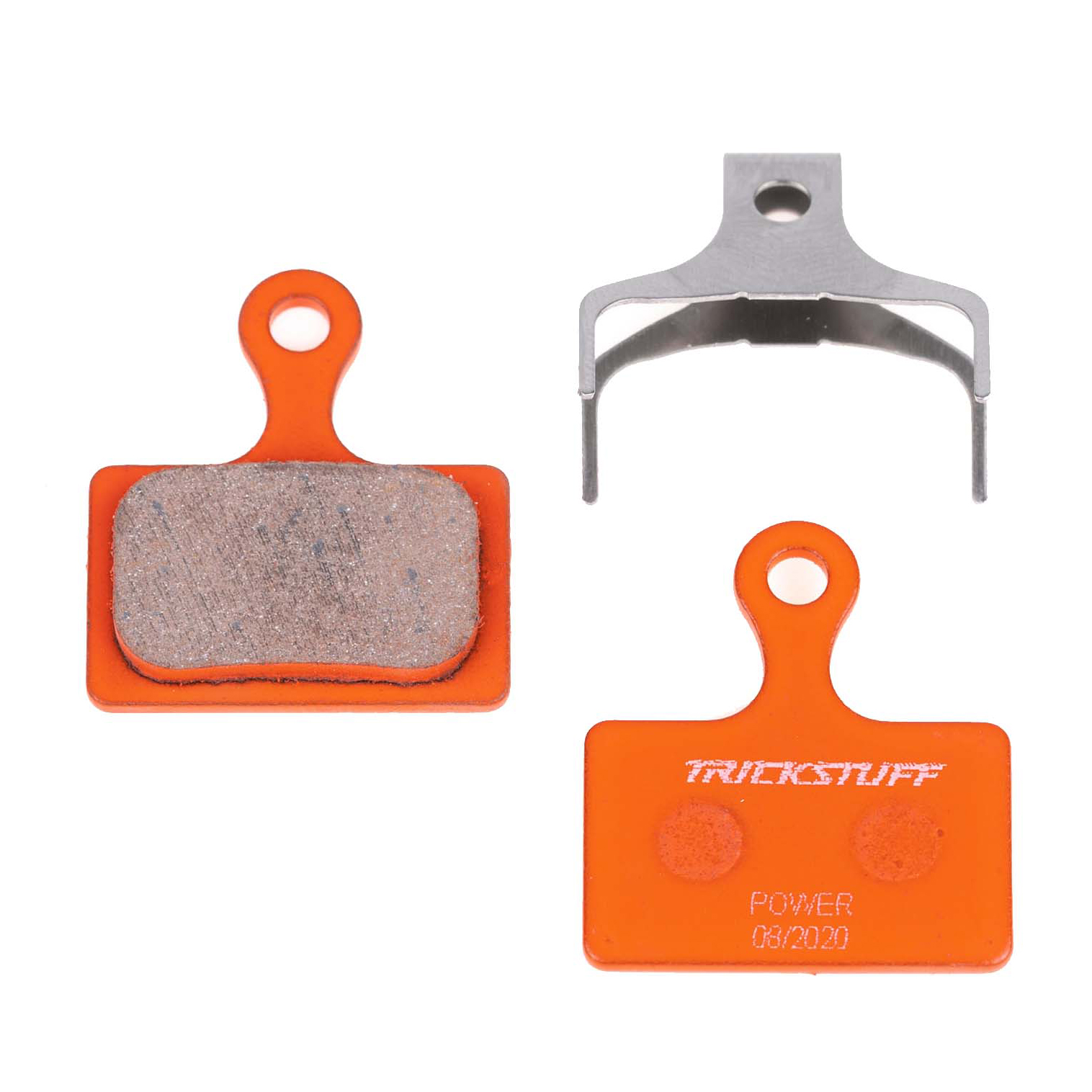
Silent performance and maximum braking power, what more could you want? Well, that performance comes at a cost, not one that isn't out of reach; you need to really want more power.
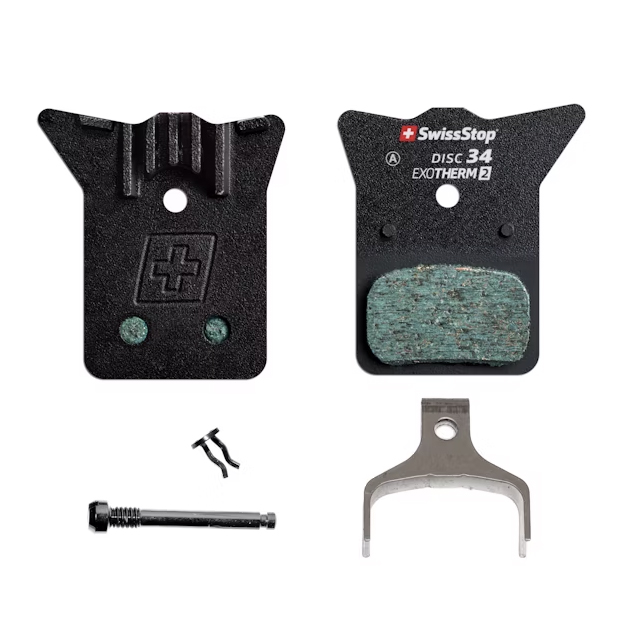
The power and the modulation are where you really notice the difference with the ExoTherm 2s, especially for heavy riders or those on long alpine descents, with very little fade at all.
Best disc brake pads for road and gravel bikes
Best Overall

The Swissstop pads are extremely quiet in operation
1. Swissstop Disc RS
Our expert review:
Specifications
Reasons to buy
Reasons to avoid
The thing that I noticed straight away is how quiet the pads are – even when brand new, in the dry, the pads seem lass raspy than many of the competitors, whilst delivering a similar amount of bite. They felt like they were already bedded in.
Other brakes almost feel slightly gritty to begin with or worse still, slightly glazed over, until you bed them in. Modulation to begin with is very good, but there is a very slight drop in performance when you really overwork the brake – I’m being critical here, because in all but very hot alpine conditions you probably won’t notice this.
I tested all the pads on the same Shimano Ultegra Callipers – having used the Disc RS pads before I knew they’d offer me something more than the standard Shimano L03A (now replaced by the L05A-RF), but I was pleasantly surprised to find that they had even more power than I remembered.
The pads do wear ever so slightly quicker in the wet but they remain quiet. Pad life in general isn’t really a big problem as the reduced 1.6mm backing plate makes space for more pad material and this improves the service life of the pad – at the very least it gives you an extra margin for issues should the weather turn bad during a long ride when you’re away from home.
I’d favour the Disc RS in most instances in comparison to the brand's Exotherm 2 pads reviewed below – the exception to this is when heat control is a factor. They're a good gravel bike upgrade.
Best Value Performance
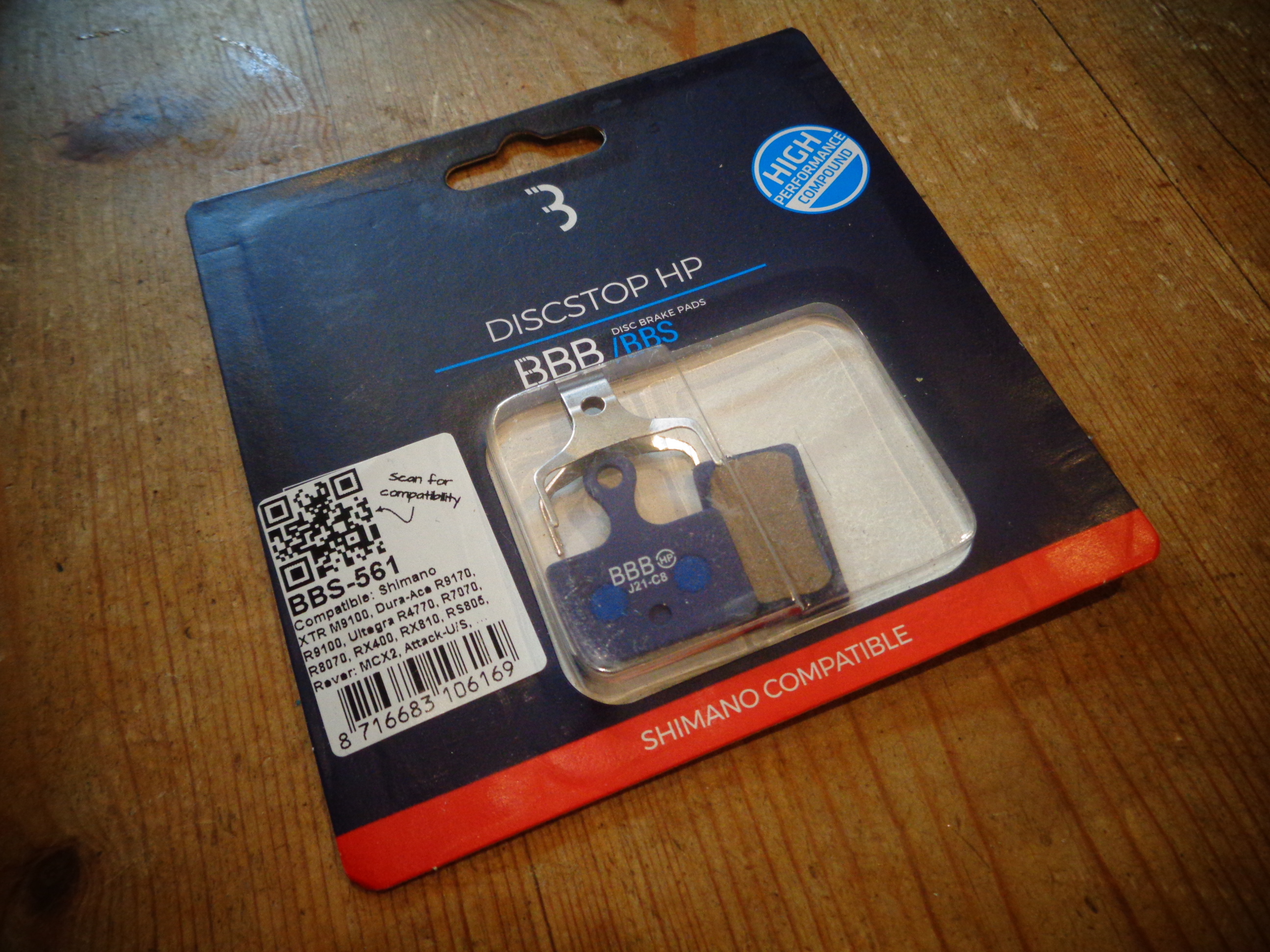
The BBB brake pads work effectively and are available for a wide range of brake systems
2. BBB Discstop Organic
Our expert review:
Specifications
Reasons to buy
Reasons to avoid
The Organic pads that BBB produce are great aftermarket alternatives, especially when supply issues restrict the use of the standard OE options. Similar to Aztec, BBB makes a simple range of alternative pads for many of the well known brands. The compound too is similar to what OE brands offer.
I found the initial bite is good, if slightly raspy, and the modulation is almost on par with Shimano and SRAM’s standard options. One nice feature is that the BBB pads come “pre-sanded”, which actually does affect the initial break-in period in a positive way as the pads feel powerful and are quiet straight away.
Most pads are released from a mold and the process, which commonly involves heat leaves a slightly glazed top layer on the pads. Taking this layer off is effectively what we're talking about when we mention "breaking-in" periods on new brake pads - BBB has sped up the process by making the pad slightly thicker and then skimming off the surface to produce a perfectly flat pad that doesn't require bedding in!
BBB also produces a sintered pad. A great option for wet weather training, but probably not to be considered an upgrade.
Best Budget

Aztec's pads are lower priced but still effective
3. Aztec Organic
Our expert review:
Specifications
Reasons to buy
Reasons to avoid
Whilst not known as a premium brand the Aztec pads punch well above their weight in my opinion. If you’re a rider on a budget or you just want a simple set of pads for winter riding the Aztec Organic option is easily on par with many of the factory (OE specification) brake pads.
These pads are quiet from day one and take very little time to bed in – they are very slightly raspy compared to the Shimano pads. The backing material deals with the heat of braking well and the black coating applied to the steel seems to function in some way as a system for radiating the heat.
This won’t be as effective as fins but it still works well. These pads lack the ultimate power and modulation of the Swissstop options but considering the price, they’re a brilliant no-fuss option for your winter bike or your 2nd bike.
They also offer sintered options for most major brands, but be aware that these cannot be used with all rotors – some of the Shimano rotors for example specify “Resin Pads Only” so do check with the manufacturer before fitting any sintered pad. Aztec make sintered compatible rotors if you need them.
Best for SRAM
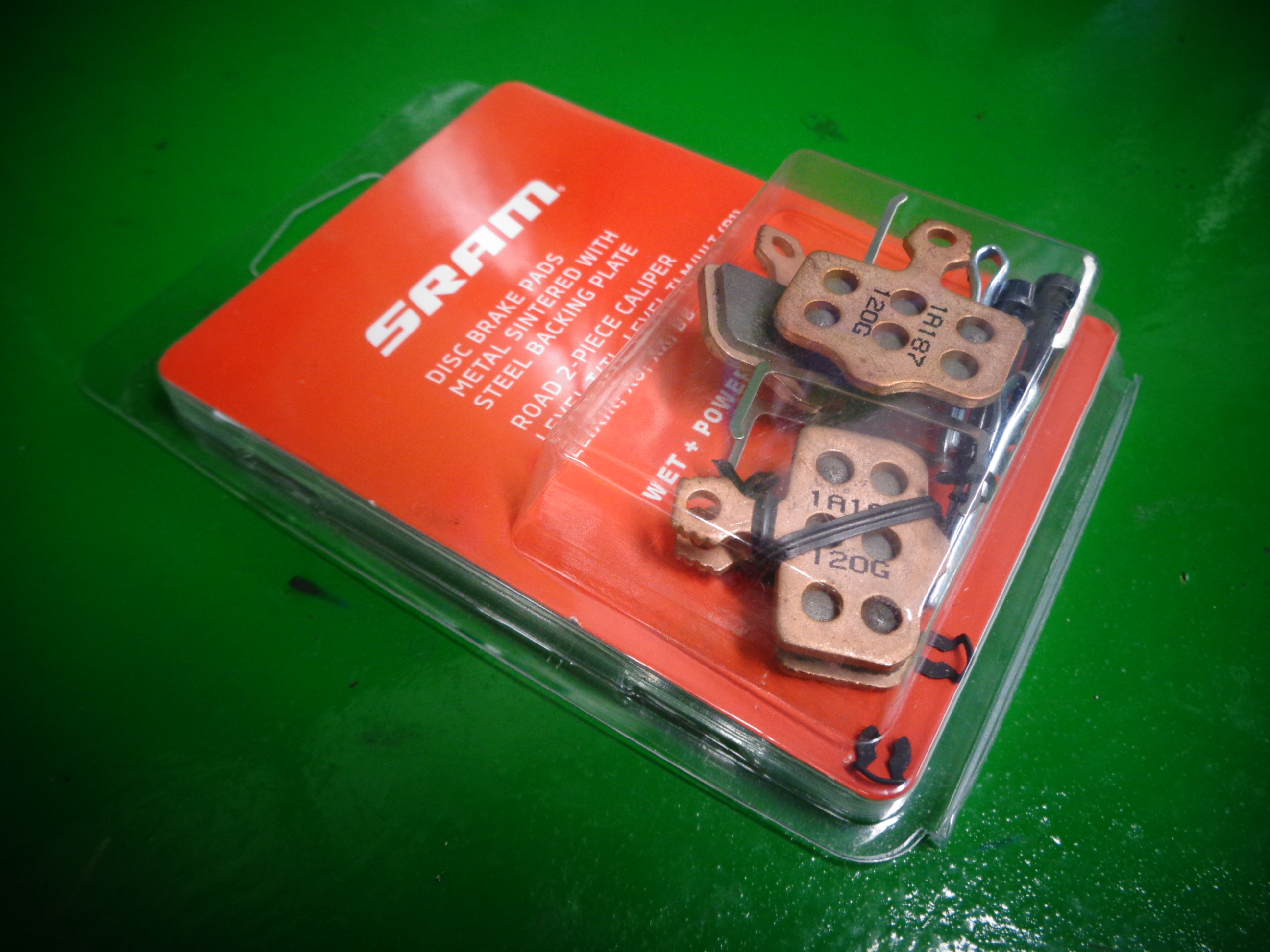
SRAM's sintered pads increase wear resistance over the standard organic pads
4. SRAM Heavy Duty (Sintered/Steel)
Our expert review:
Specifications
Reasons to buy
Reasons to avoid
Whilst not an upgrade for any other systems, I’ve included the SRAM sintered pads because they’re actually very good and they do offer an upgrade on the standard 'Quiet' organic pads when you use them in the correct conditions. They only produce pads for their own brake systems, but SRAM’s sister company, Avid, has helped make some really good quality pads.
The 'heavy duty' option lasts longer than the standard OE pads and offers more power and bite in wet conditions. This was the only pad on the test which wasn’t tested on my Shimano Ultegra Callipers since it's SRAM-specific, so therefore you could argue that any comparison in performance cannot be verified. But it’s still a relevant real-world test as conditions will have a similar effect on the pads regardless of the brake itself. The SRAM pads definitely didn’t mind a bit of rain, in fact, I’d argue that they seemed to get stronger in wet conditions.
I was surprised to find that the heavy-duty option can suffer a little with glazing over if the brake system gets too hot and this was a bit of an issue in the dry. This left the brake with less modulation and less initial bite – not to a dangerous level but it was definitely noticeable.
I removed the pads and used some sandpaper on the top surface of the braking material and they behaved as new again, which was a simple fix but one that most people may be loath to do. That was the only flaw however and in general, I’d say that they are nearly as good as the Exotherm 2 pads.
SRAM’s organic/'quiet' pad doesn’t seem to suffer from glazing and in most cases is a great pad and a brilliant option for most riders. It does however wear quickly and can suffer from brake fade with heavier riders on long descents.
Best for Shimano

The Shimano pads tend to wear more quickly than aftermarket aternatives
5. Shimano L05A-RF
Our expert review:
Specifications
Reasons to buy
Reasons to avoid
As mentioned above, I tested all the pads on the same Shimano Ultegra Callipers, which are supplied with the standard Shimano L03A (now replaced by the L05A-RF) pads. To double-check my comparisons, I tested both the L03A and the newer L05A-RF pads. Could I tell the difference? No, the pad is more of an evolution than an upgraded product, but that’s not necessarily a problem as it was already a very good fit and forget option.
I have found that these pads suffer more than others with contamination. I’m not sure if I’ve just been unlucky, but I‘ve binned a few sets over the years which just refused to stop making that terrible squeal! The pad material itself seems very soft, which is one of the reasons that they wear quite quickly, but also one of the reasons why the initial bite and the modulation are so good.
They do seem to suffer slightly with heat control which is odd given the huge radiators. The new design doesn’t seem to have changed much in real life, and as a plain replacement, they’re good, but all the other options here provide significant gains in performance or savings on the price. In the case of the Uberbike options, both!
Best for electric bikes
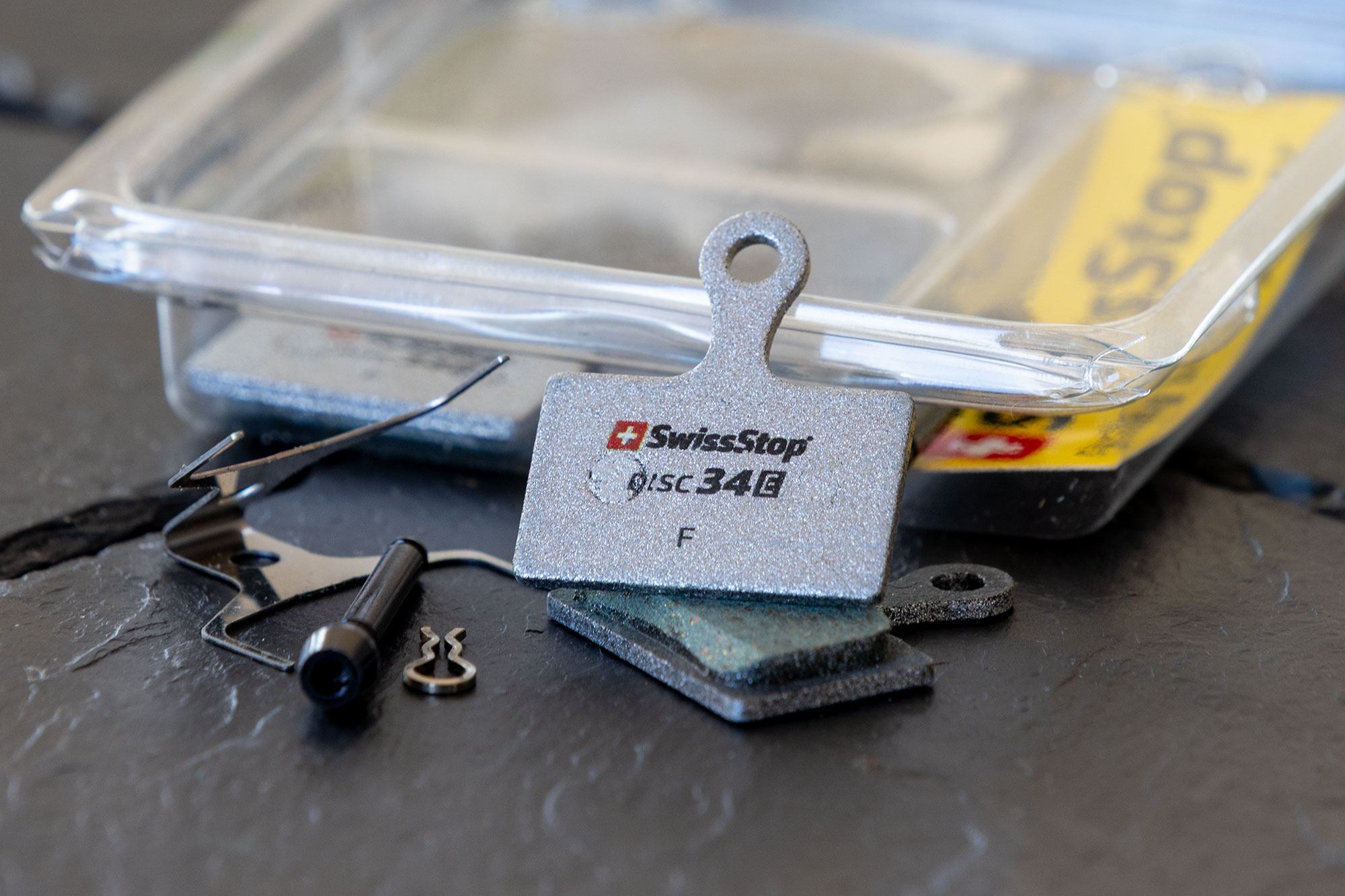
Uberbike's pad options include an e-bike specific model
6. SwissStop Disc E
Our expert review:
Specifications
Reasons to buy
Reasons to avoid
Looking at the specs and SwissStop’s claims, it’s easy to dismiss this pad as an inferior version of the brand’s Disc RS that heads up this guide. In a nutshell, it’s noisier with less bite, so it’s hardly a compelling buy. However, stay with me on this because the truth is more nuanced – as always, it’s all about the use case.
Bite and modulation are much misunderstood terms that attempt to describe how the brake feel evolves as you apply pressure to the levers. Very simplistically, bite can be likened to throwing a light switch, an action that’s both powerful and immediate. Modulation is akin to a dimmer switch, allowing you to increase or decrease power over a more extended period gradually.
Crit racers demand bite because they’re constantly accelerating and decelerating as they power from one tight corner to the next. Endurance riders, on the other hand, are more likely to value modulation to ride long descents more smoothly. Logically, they’re going to favour better heat tolerance and improved longevity too.
Fitting a set of Disc E pads to my Shimano GRX-equipped Specialized Turbo Creo SL Comp Carbon EVO e-bike was simplicity itself; it’s just a straight swap. All the necessary parts are bundled with each pad, including spring, cotter pin and bolt. The bedding-in process, which involves dragging the brakes for 20-30 seconds on an increasingly steep descent before repeating a few times, was also straightforward.
Bite is, of course, very good, just like modulation, which is excellent, but there is a subtle difference between these and the RS versions, with the Disc E pads exhibiting a touch more feel. Heat tolerance is superb on long descents, especially considering my Creo and I have a combined system weight approaching 100kg. There was next to no fade that I was aware of.
So far, pad wear has been pretty minimal, and they’ve remained quiet in both dry and wet conditions.
Best for quiet operation

7. Trickstuff Power Pads
Our expert review:
Specifications
Reasons to buy
Reasons to avoid
Organic, steel-backed pads from Germany that promise excellent stopping power. Trickstuff makes four different types of brake pads: Standard, Power Alu, Power and Power+, with options to fit pretty much every conceivable disc brake caliper - the three-digit number in the name denotes which brakes they will fit
I fitted the relevant ‘270’ Power brake pads to my Ultegra-equipped winter bike in place of the factory-fitted finned Ultegra pads.
The first three things that I noticed were that the pads weren’t chamfered in the way that Shimano pads are, a design which makes it a bit easier to insert the rotor, that they lack cooling fins, and that the bright orange colour of the steel backs looked great; a bit like how painted callipers always make a car look sportier.
Although the Power brake pads are perhaps geared more towards off-road performance, the wet, salty and grimy winter roads of the Peak District often feel more like dirt tracks than tarmac, and so seemed appropriate enough for the test.
The Power brake pads lived up to their name. Right from the outset, with no bedding in or special treatment, they provided superb power and were easy to modulate without being grabby or noisy. In fact, despite riding in some pretty damp, dank and dirty conditions, I am very pleased to report that they haven’t made a sound at any point (used with Shimano Ultegra R8000 rotors).
Great performance and silent operation, what’s not to like? Well, the major sticking point is the price. At £30 a pair, they are about a fiver more than Shimano’s own, finned pads and three times the price of some aftermarket pad options. Organic pads typically don’t last as long as sintered pads either, and Trickstuff itself rates the Power pads as being lower on durability than their own ‘Standard’ pads, so if you are a heavy user, then it could get expensive quite quickly. However, if you want or need some impressive performing brake pads for on or off-road use, then the Trickstuff Power brake pads certainly live up to their name.
Best for Long Descents
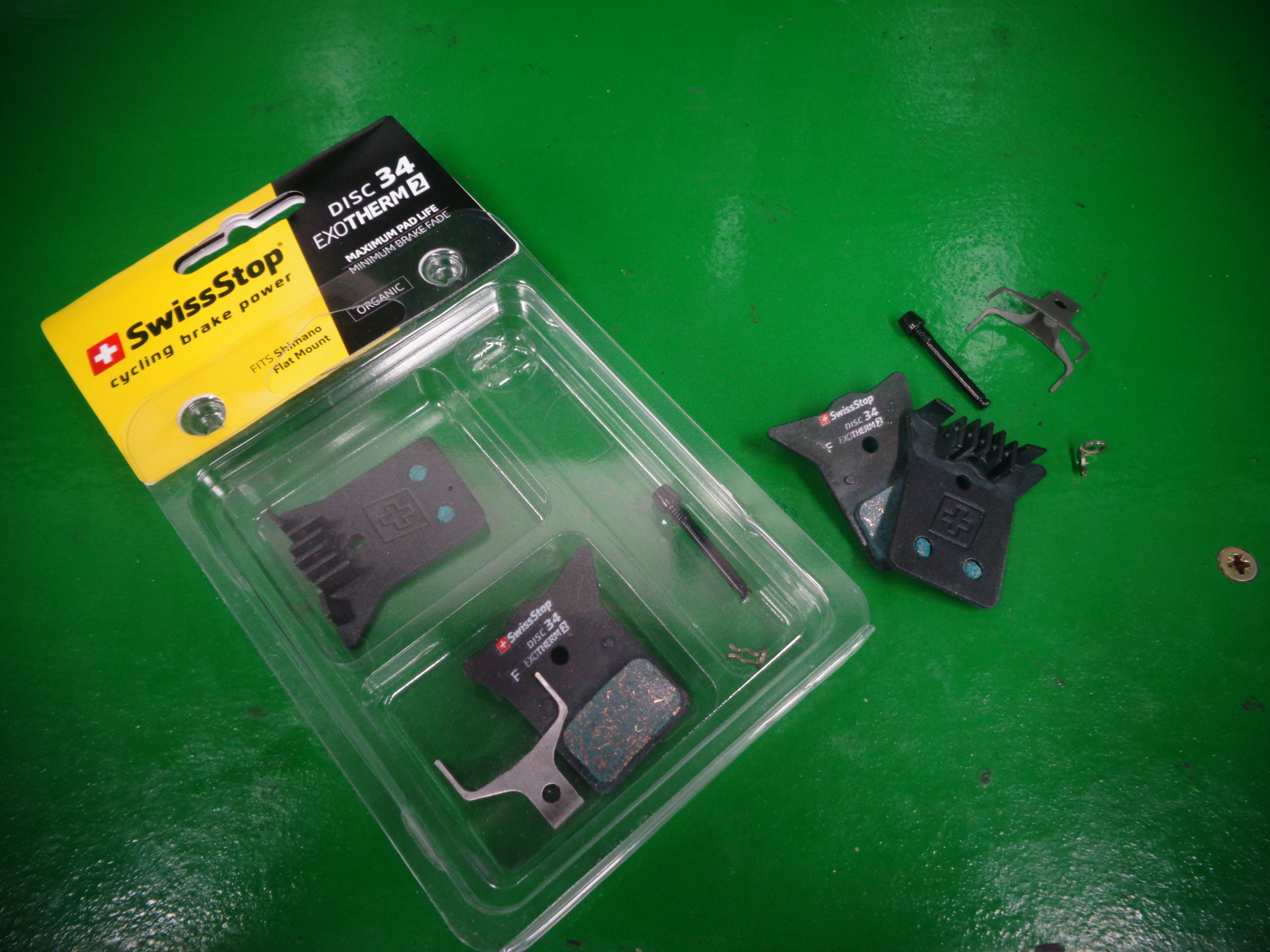
The ExoTherm pads dissipate heat well on long descents
8. Swissstop Exotherm 2
Our expert review:
Specifications
Reasons to buy
Reasons to avoid
The new “Exotherm 2” pads are designed to deal with heat better than the RS pads due to the fins which radiate more heat away from the brake. This isn’t a problem for most short rides, but for those that travel with their bikes to more mountainous places it would definitely be a concern and it’s worth remembering that Shimano’s standard pad is finned for the same reason.
Therefore, for heavier riders or long descents (especially both) where heat control is an issue it makes good sense to consider the Exotherm 2 pad.
In terms of feel, the power and the general modulation is very similar to the RS version. After the initial bedding-in period this got even better. In part this is down to a slightly different pad material - Swissstop are being slightly cagey about precisely what it is, but it’s similar to what many brands would refer to as Sintered (I’ve also heard it called a “hybrid” material).
Interestingly they developed their original pads with the help of the Swiss Railways Engineering department, so I would hazard a guess that the material has been developed with materials from outside the bike industry.
Initial bite improves over time, but the power and the modulation are where you really notice the difference – there’s very little “brake fade”, where the brake’s performance decreases as things heat up. You’ll notice this most towards the end of long descents or if you’re a particularly heavy or aggressive rider.
How We Test
We are riders first and foremost here at Cycling Weekly, and we test a very wide range of bikes and components, including many of the best road bikes and best gravel bikes. Most bikes come with disc brakes, so there's ample opportunity to get the feel for different braking systems.
Swapping in new brake pads is a fairly simple process once you understand what you're doing, so it's relatively easy to test a range of different pads as part of our riding.
When we test brake pads, we will focus on three main areas, specifically when considering our overall score and verdict. The first of which is always the fitting and initial brake feel through the bedding-in period, which is important as your first impression of a product will inevitably influence your overall view.
As the pads bed in, our testers will begin to evaluate overall performance and assess the pad's ability to perform in various scenarios. Finally, our concluding thoughts will focus on the longevity of the pads and whether that impacts performance as they wear down.
In many cases, our testing of the best brake pads for road and gravel has been the culmination of years of riding, during which we have developed opinions specifically on durability and individual scenarios over an extended period and thousands of Kilometres.
Meet our testers
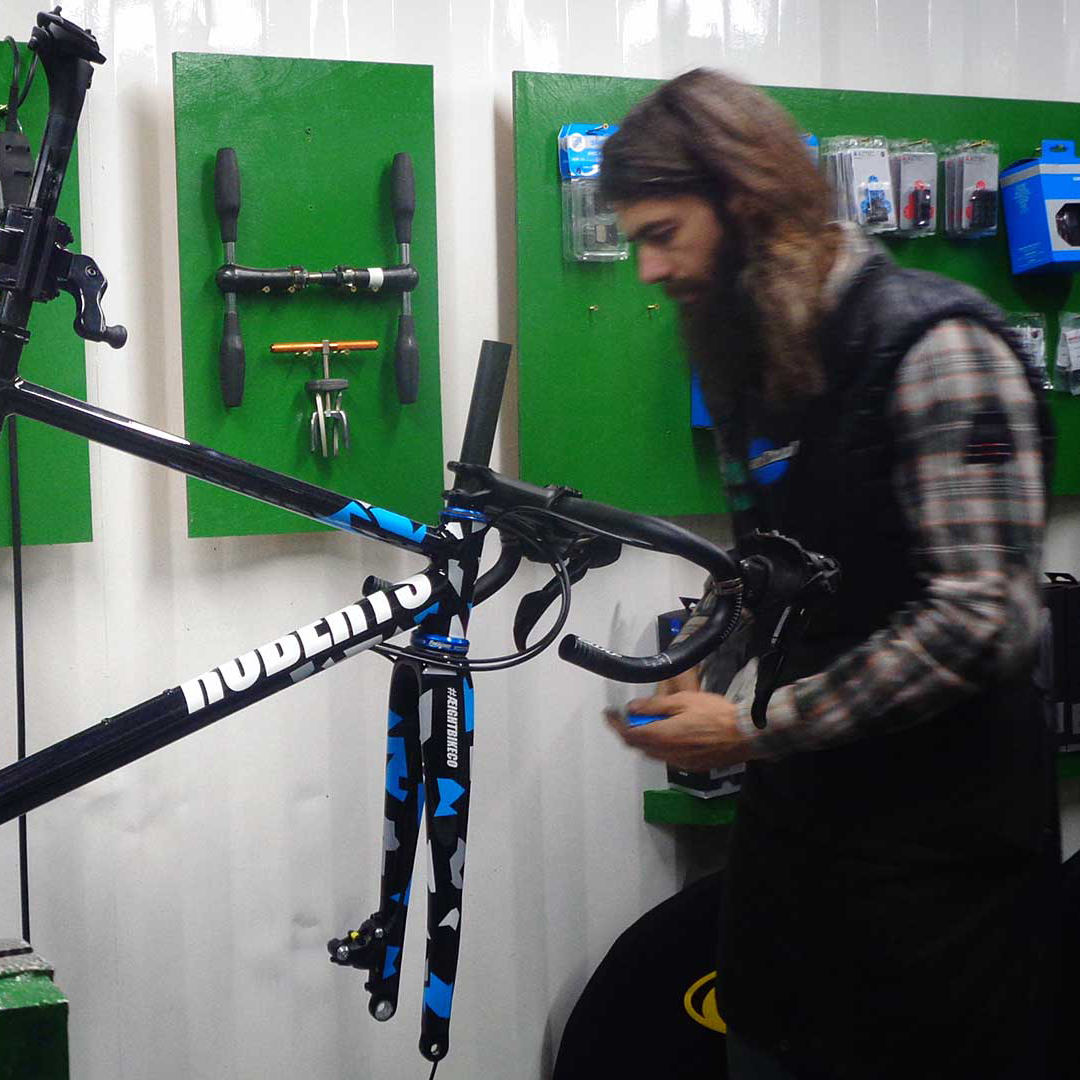
Glen is a professional bike mechanic and builder who has established a reputation for himself due to his attention to detail and expert knowledge. Glen has to find speed for his clients and riders on a near-daily basis. He is also a prolific racer himself, which means a serious amount of hands-on experience pushing bicycle parts to the limit of their performance and durability.
How to choose the best brake pads for road and gravel
Brake pads come in various compounds, each with its pros and cons based on weather conditions, bite, overall power, and modulation. Even with the standard options from the groupset manufacturer, there is very often an upgrade path available whilst staying on brand.
Most brands produce both “sintered” and “organic” pads. Sintered (sometimes referred to as steel or metal) pads contain small amounts of metal in the pad material itself, which are designed to maximise longevity in bad conditions – for this reason, the rest of the pad material can be made to create more friction and therefore more stopping power. Organic pads are much quieter and often offer more modulation – they’re excellent for use on the Summer bike.
Pads are also commonly offered in three different backing materials. Steel is the most cost-effective option, but it can be heavy – it handles heat very well. Aluminium is much lighter, but it is possible to warp the backing material on very long alpine descents, which often causes unwanted noise long-term.
Therefore, many brands offer a third option, which is an aluminium backer with a built-in heatsink – these look a bit like a radiator sitting at the top of the pad and work in the same fashion, radiating heat away from the brake. Don’t confuse backing material with whether a pad is sintered or not, as it’s not always obvious.
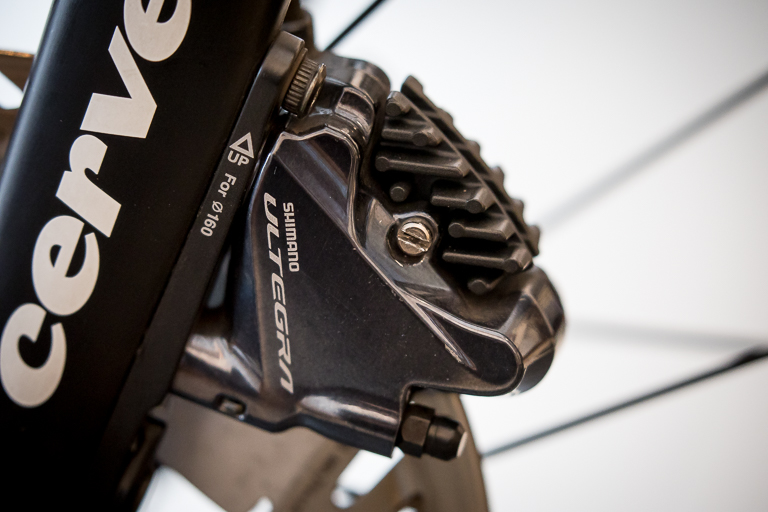
Which pads will fit my calipers?
There's a wide range of shapes and sizes for disc brake pads and you need to select the right ones for your calipers or they won't fit or won't operate correctly. In general, you should check and double check your brake model and make sure that the pads you plan to buy match.
Replacing like with like will solve the problem, but otherwise brands will show the compatibility of their pads on their sites and on the packaging. Swissstop even has a facility to print out a life size image of its pads, so you can sit your current pads on top and ensure that their outlines match up.
If you're not sure, get a shop to find you the correct pads or replace your old ones for you.
What are the best brake pads for gravel bikes?
Due to the nature of gravel riding which has a much higher chance of dust, dirt and mud being in and around your brake pads, it is generally advisable to use a more durable brake pad compound, maybe even a sintered option. You also generally moving at slower speeds and require a lot less overall stopping power and more control. This tends to mean people drag their brakes a lot more, so a steel backed pad generally helps to manage the heat and stop pads from warping.
What type of brakes are best for road bikes?
On the road, you're more likely to need to stop suddenly at high speed, such as if a car or pedestrian suddenly appears in front of you. Since we typically use road brakes much less than off-road brakes, they face fewer abrasive contaminants, such as mud, making durability less of a concern. This allows you to use softer, more powerful brake pad compounds. However, these compounds can be more easily contaminated by oils. Of course, this might not always be the case, for those who live in particularly wet climates or tend to do a lot of big descents, it's worth considering a more durable option.
Frequently asked questions about brake pads for road and gravel
How do I know when to swap my pads?
Despite what you might have heard, the best way to check the pads is with a visual inspection. You should get used to doing this at least every few rides depending on the conditions. It's very much worth removing the wheels to familiarise yourself with what the different parts of the pad actually look like. With the wheels out, you can look into the caliper itself and you'll be able to see the round pistons which push the backing material of the pad. Closest to where the rotor will be you'll see the brake pad material itself. Commonly there will also be a helper spring which mounts above the pad and helps keep the brake pad against the piston and away from the rotor.
Even if you're going to get a mechanics help with changing the pads you should know what you're looking at so you can make an informed decision about when your pads are worn out (or getting worn out). Don't wear the pad material down all the way - if this happens it can cause damage to the rotor and in extreme cases can damage the pistons! Like the best rim brake pads, you should replace your pads when they're around 85-90% worn, and if you've got a long-distance ride coming up, it may be worth replacing them anyway.
The only other time you may need to replace pads is if you contaminate them - if you've unwittingly contaminated the pads you will often have to replace the pads early as cleaning them is very difficult. There are some hacks to avoid this but with such a crucial part of the bike in terms of safety I'd be very careful about what you see on the internet - it's always safest to fit a new set if in doubt, just remember to clean the rotor with disc brake cleaner at the same time.
What tools do I need to swap my pads?
Most systems don't require specialist tools to do the job and commonly you'll be fine with a set of allen keys, a pad spreader and a bit of knowledge. It's always worth checking the official process recommended by the manufacturer of your brakes first. Most major brands publish this info on their website, via a technical website or via their own YouTube channels.
Broadly most systems work in a similar fashion and essentially you'll need to reset the pistons which I normally do when the old pads are in place. I use a pad spreader (most tool companies make a relatively cheap spreader) to push the pads apart and reset the pistons. Then I remove the pads and clean everything, first with a wash and then with a specific disc brake cleaner. I also clean the rotors with the disk brake cleaner and a new clean rag. Then the new pads go in complete with the helper spring, pad bolt and any spring clips. Refit the wheel, visually check that the rotor is central in the caliper and then operate the brake. It can take a few squeezes before the brake works properly as the new pads need to match up to the rotor after you reset the pistons.
As with any maintenance (but especially with brakes), make sure you fully understand what you're doing and why - use the correct tools for your system and follow the manufacturers guidelines. If in doubt take it to a mechanic!
Are all pad options suitable for all rotors?
No. This is a commonly overlooked problem and one that will very quickly destroy a set of rotors. Commonly Sintered Pads should only be used with heavy duty rotors, whilst organic compounds tend to work with far more rotor options. Always check what the manufacturer says - some actually print it on the rotor. Mismatched pads and rotors can cause problems for the rest of the braking system as the pistons are designed to work within a fairly tight tolerance. A worn out rotor will overwork a brake quickly and can obviously be dangerous. If in doubt double check the info on the manufacturers site.
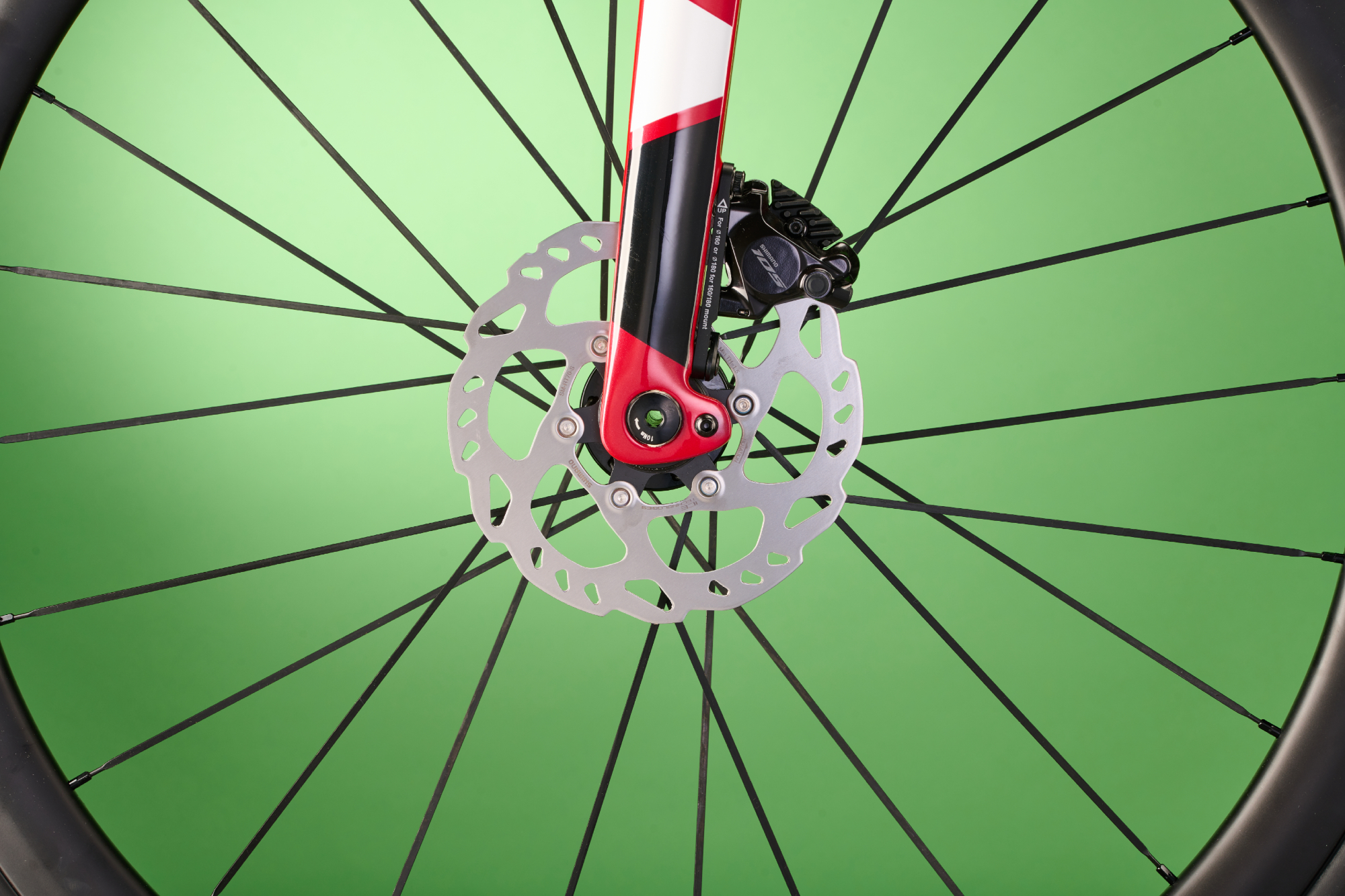
How Should I care for my brakes/pads?
Many brands like Swissstop, Morgan Blue, etc also produce a disc cleaner to get rid of any contaminants which should be used primarily on the rotors, but it can be used on the pads too – ideally spray the cleaner onto a lint-free rag and use this to wipe the pads clean rather than spraying the cleaner directly on to the pads which will only drive contaminants further into the pad material.
In general always use a bike specific wash rather than a Washing-Up liquid. Bike specific washes contain less contaminants and any potential noise-causing-nasties are designed to evaporate after use. Washing-Up liquids on the other hand will make your bike look pretty because they contain particles designed to stay on the surface of what you’re washing and then reflect light which makes everything nice and shiny – unfortunately they’ll also leave you with squeaky brakes that do very little to help slow you down! Always keep a nice clean sponge separate for washing the brakes (I have three sponges and three small buckets in total – one set for drivetrain, one for the frame and clean components and then one for the brakes).
Glossary
- Sintered - often referred to as metal or steel pads, Sintered pads are pads made of a hard material usually metal which allows an increased lifespan. The trade-off is most commonly less performance and a noisier brake.
- Organic - this a much softer brake pad material which most commonly offers much higher braking performance at the cost of decreased longevity and poor heat management.
- Resin - most commonly found in Shimano systems. Shimano combines the benefits of organic pads with harder non-metallic material similar to a sintered pad to increase pad life without increasing noise and heat.
- Semi-metallic - similar to Shimano resin pads, semi-metallic pads include harder materials usually metals to increase pad life while trying to minimise any effects on pad performance.
- Bedding-in - for a brake pad to achieve its optimal performance a number of heating and cooling cycles need to be performed. This process which should be completed before pushing the pad to its limits is called 'bedding-in'.
- Fade - brake fade is common in any brake be it a car or bicycle. It refers to a reduction in the performance of a brake as heat builds up during use. To many, this will feel like when increased pressure at the lever results in no further increase in braking power.
- Modulation - is the ability to control the amount of clamping force on a disc with a given pull of your brake lever. It's useful for scrubbing speed, controlling your bike through turns and keeping your tyres from skidding.
- Bite - to many this will be the feeling of power a brake offers. It's that initial jerk reaction and how hard you need to pull the leave to lock the wheels.
The latest race content, interviews, features, reviews and expert buying guides, direct to your inbox!

Glen’s an ex-racer who still finds time to ride bikes for SDWRacing. He started racing in 1998, initially specialising in XCO and Solo 24-Hour Mountain Bike. He became a mechanic in 2002, working in shops and also for professional race teams. During this time he spent more time racing cyclocross and road, and then also time trials. In 2013 he built his first bespoke frame and then spent several years at Roberts learning the art. Since then he’s designed, tested and now sells frames/bikes to the public as part of his ÆIGHT brand.
- Matt Ischt-BarnardEcomm and Tech Writer